Americans have been blessed with a steady supply of clean water, for outdoor as well as indoor use. It’s a privilege we often take for granted. But with much of the western United States in a severe, years-long drought, attention is turning to water use — and abuse. California regulators this week tightened emergency restrictions on water use, including for residential landscapes, and said tougher restrictions could be on the way. California governor Jerry Brown and lawmakers unveiled a $1 billion plan Thursday to address the state’s drought. Other areas of the country also are promoting water-saving programs.
Although agriculture and business account for a large portion of U.S. water consumption, residential usage is substantial — and it’s within each person’s control. The Environmental Protection Agency (EPA) reports that the average American family of four uses about 400 gallons of water a day. The agency says that by switching to more efficient appliances and fixtures, we can cut our water use by 30 percent. Being water wise takes more than just machinery, however. A little care and common sense go a long way toward minimizing waste of this increasingly precious commodity. Here are 11 tips for reducing water consumption at home. Not only will your water bills go down, but every drop you save will help ensure that our taps will never run dry.
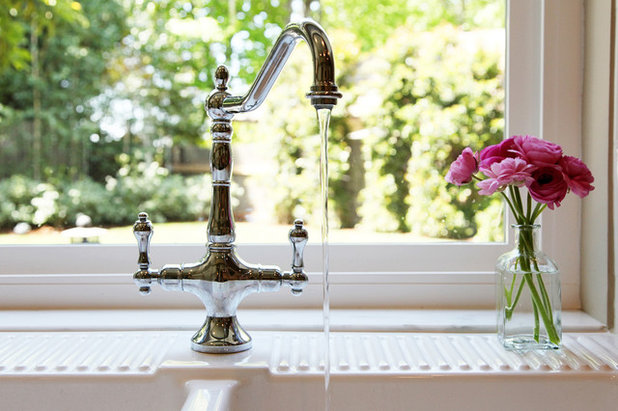
S / Wiley Interior Photography
1. Turn off faucets. Start saving by breaking a bad habit: Never let faucet water run needlessly as you wash or rinse dishes, wash your hands or face, brush your teeth or shave. Bathroom faucets run at about 2 gallons of water a minute, according to the EPA. Turn off the tap while you brush your teeth and shave, and you can save hundreds of gallons a month.
Tip: Be sure to fix leaks. A slow drip from a leaking faucet can waste as much as 20 gallons of water a day. A leaky toilet can waste 200 gallons a day.
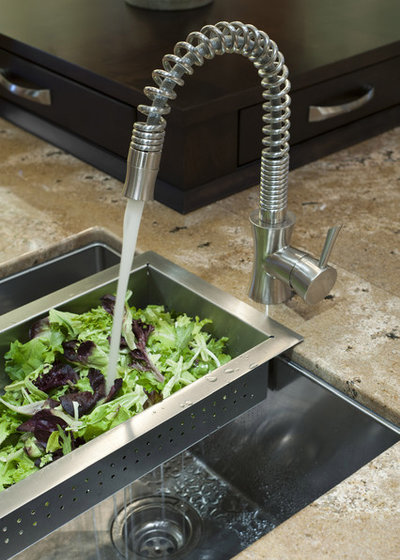
Old World Kitchens & Custom Cabinets
2. Use every drop. Learn to repurpose water. One easy way is to capture under your colander the potable water you use to rinse fruits and veggies, and deposit it in the garden. Do the same while you wait for your hot water to come in.
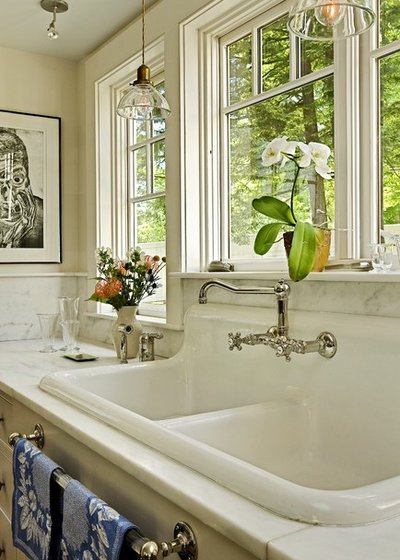
Smith & Vansant Architects PC
3. Double-dip dishes. Take a page from the past and make smart use of dual sinks. Instead of letting the water run while you wash dishes, fill one sink with hot, soapy water for washing, and the other with cool, clear water for rinsing. You’ll use half the water you otherwise would, according to the EPA. If your sink is a single model, use two large bowls for washing and rinsing.
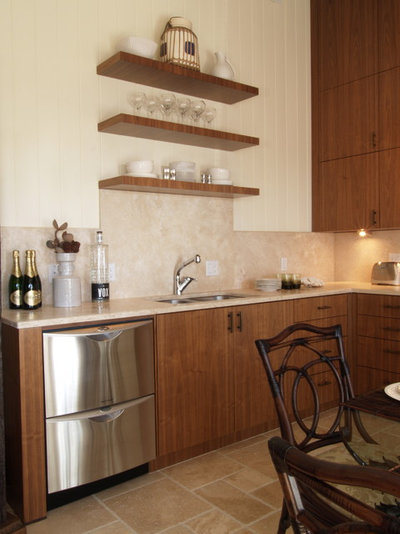
Joel Kelly Design
4. Consider a smaller dishwasher. Today’s modern, efficient dishwashers can save a great deal of water. Scrape dishes instead of rinsing them before loading, and you’ll save up to 10 gallons a load.
You should run only full loads. If you generally have small loads to wash, consider buying a double-drawer model, such as the Fisher Paykel one shown here. The drawers, which use less than 2 gallons of water each, work independently, saving water, energy and detergent.
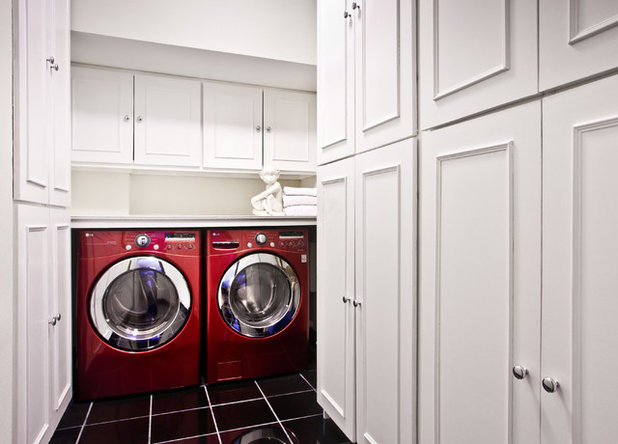
Supon Phornirunlit / Naked Decor
5. Buy a high-efficiency washer. The average American family washes about 300 loads of laundry each year. Clothes washing accounts for more than 20 percent of residential indoor water use.
As a rule, front-loading machines use less water than top-loading machines. But whether you’re shopping for a front- or top-loading washer, to save the most water, look for an Energy Star–certified machine. These machines use about 40 percent less water than regular washers. The key to their savings is that the tub does not get filled up; clothing is flipped and spun through streams of water and repeated high-pressure sprayings.
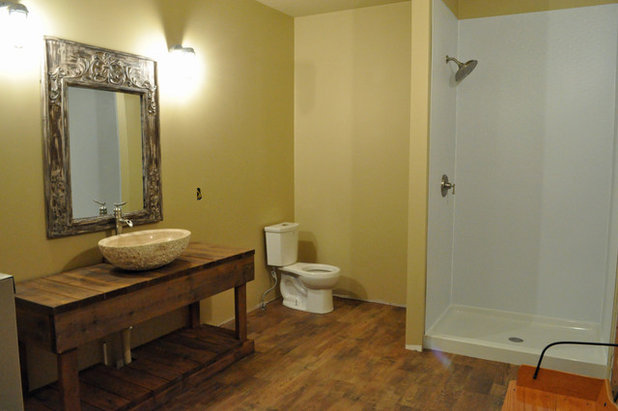 6. Go with low-flow.
6. Go with low-flow. The bathroom is the site of the greatest indoor water use in the house. So it’s also a place where you can reap major water savings with some smart choices.
Toilets, for example, account for nearly 30 percent of an average home’s indoor water consumption. Older toilets use as much as 6 gallons per flush. But the newer, EPA WaterSense-certified toilets use just 1.28 to 1.6 gallons of water per flush. Dual-flush toilets use even less water.
Showering accounts for almost 17 percent of household indoor water use — 40 gallons a day for the average family of four. To save water here, replace a regular showerhead, which uses 2½ gallons a minute, with a WaterSense-certified showerhead, which uses 2 gallons a minute or less while offering the same or better shower performance.
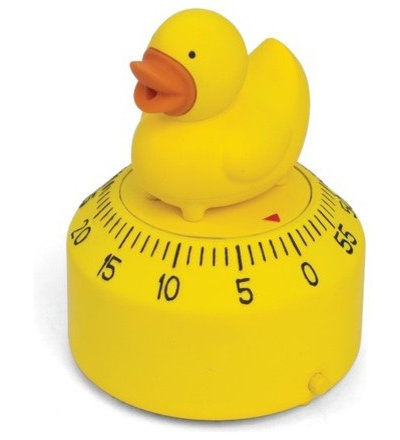
Duck Kitchen Timer - $11.99
7. Shorten your showers. Use a kitchen timer to time your showers. Aim for five minutes or less.
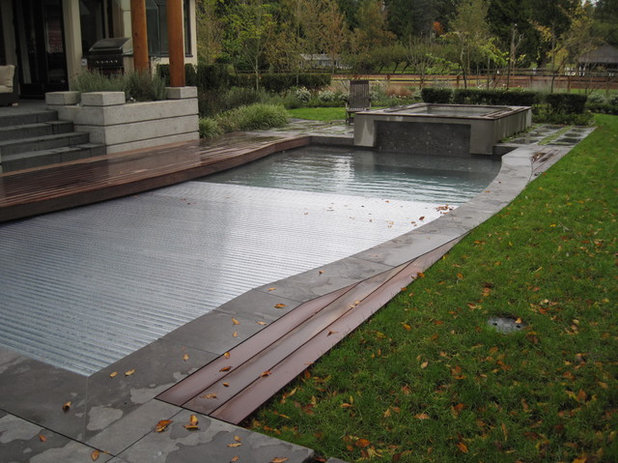
Aquamatic Pool Cover Systems
8. Cover up. Pool covers can be a pool owner’s best friend. Not only does a cover retain a heated pool’s temperature, but it reduces evaporation. The Department of Energy reports that a pool cover cuts the amount of replacement water needed by 30 to 50 percent.
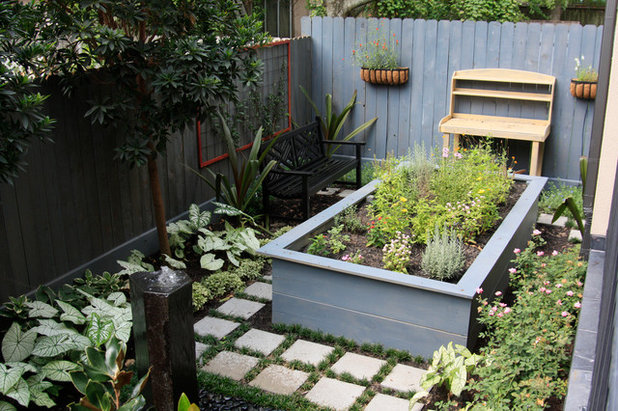
Nature's Realm
9. Water by hand. Consider hand watering if you have a small garden area. Households that manually water with a hose typically use 33 percent less water outdoors than those that use an automatic irrigation system, according to the EPA.
Houzz guides to greywater systems, losing the lawn and more
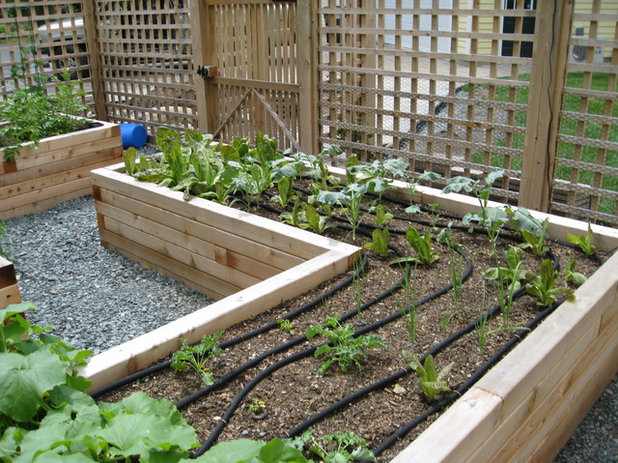
Land Design, Inc.
10. Get smart about irrigation. And speaking of watering the garden, residential landscape irrigation has come a long way. Consider investing in weather-based irrigation controllers that adjust to real weather conditions and provide water only when needed. Replace older mist-style sprinkler heads with today’s newer, and more efficient, rotator sprinkler heads, which shoot jets of waters at a slow rate to increase penetration and eliminate drift. Install new drip irrigation piping and soaker hoses for improved watering efficiency.
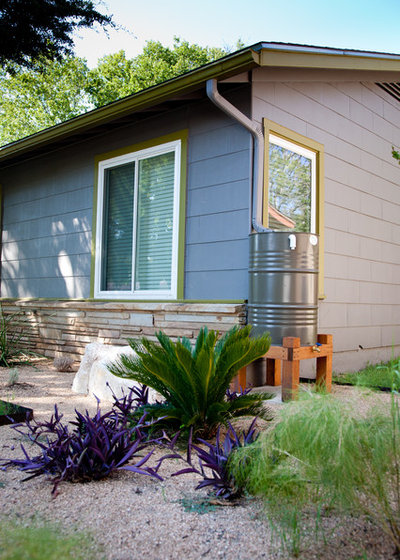
Native Edge Landscape
11. Capture rainwater. Find ways to save and store rainwater for use in the garden. Using a 55-gallon drum like this one, which catches roof water from gutters and downspouts, is one easy way. Remember to cover your barrels to keep mosquitoes at bay.
Tell us: Has your household been cutting back on water? Share your experiences and tips in the Comments.
More:Just Add Water: Rain Barrel Magic
How to Switch to a Tankless Water Heater
More water-saving guides for indoors and out





